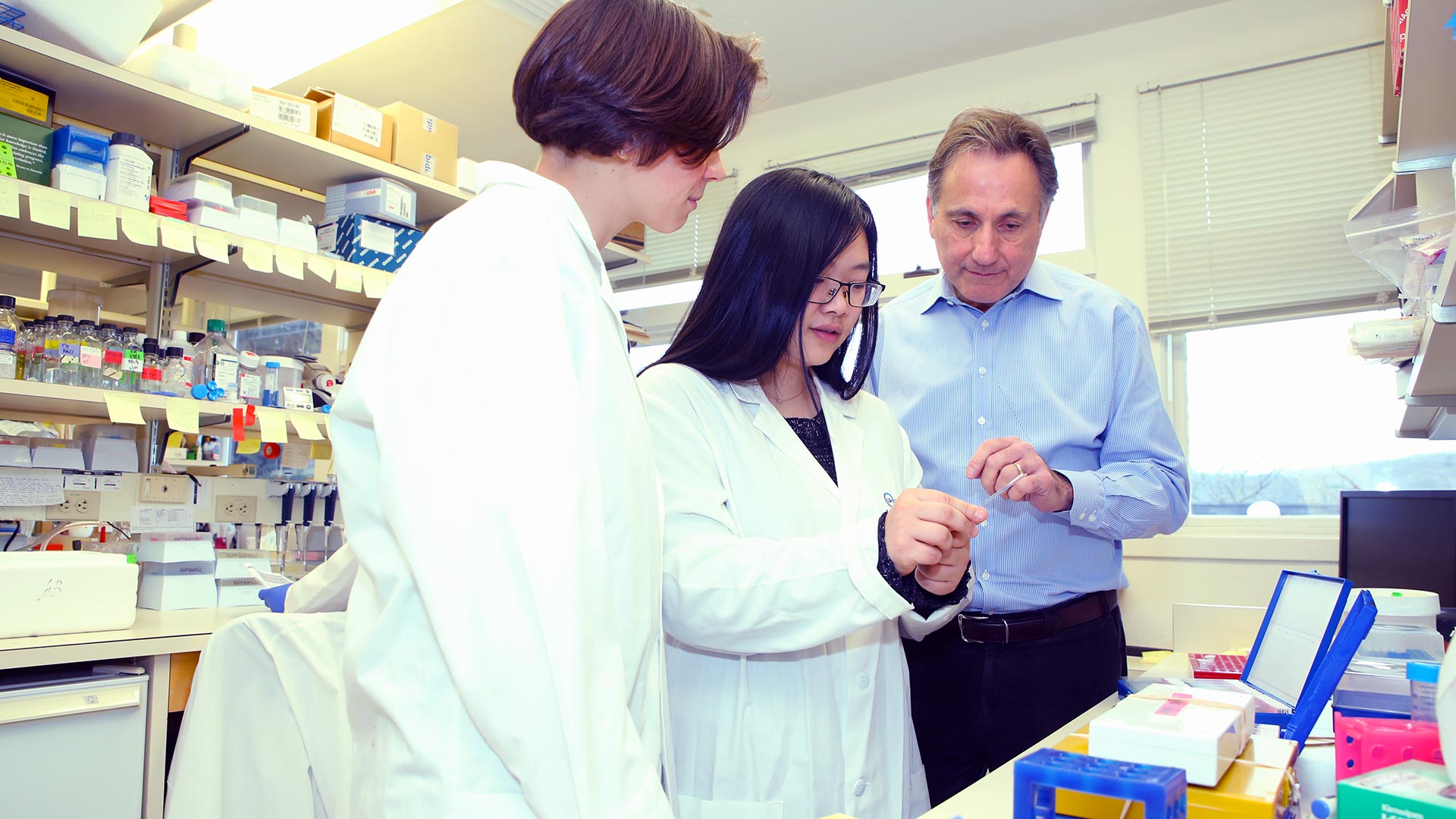Breast cancer is one of the most common cancers among women in the United States. Thanks to decades of fundamental research, it’s also one of the most curable. The exception is a particularly aggressive variant known as triple-negative breast cancer (TNBC). It accounts for 10 to 15 percent of all breast cancer cases. It disproportionately affects younger and African American women. No effective therapies exist. A new discovery by Cold Spring Harbor Laboratory Professor David Spector and graduate student Wenbo Xu—published in Molecular Cancer Research, a journal of the American Association for Cancer Research—could help point toward the first.
Spector’s group researches the role of RNAs called long non-coding RNAs (lncRNAs) in cancer formation. They’ve now discovered that a rarely studied lncRNA, previously implicated in gastric cancer, plays a part in TNBC, too. It’s called LINC01235. The Spector lab found LINC01235 when performing RNA sequencing on human breast tumor organoids—tiny three-dimensional cancer models. Xu, who spearheaded the project, suspected a link between LINC01235 and TNBC when reviewing data from The Cancer Genome Atlas, a database of over 11,000 cancer patients. The data suggested expression of LINC01235 correlated with that of the breast cancer gene NFIB, already linked to TNBC.
Still, “very little” was known about NFIB and next to nothing about LINC01235, Spector says. So, the team decided to “delve deeply into it.” They had important questions:
“How does it work in the cell? What processes might it be involved in? We came upon this interesting story of where it sits in the genome and the gene it regulates.”
To test Xu’s hypothesis, the team knocked out LINC01235 in cancer cells, using CRISPR. Separately, they knocked it down in cancer cells and organoids, using antisense molecules. In both experiments, they found that reducing the RNA’s production also lowered NFIB expression. When that happened, TNBC organoid formation was suppressed.

“Our findings demonstrate that LINC01235 positively regulates NFIB transcription,” Xu explains. “This modulates the NOTCH pathway, influencing cell proliferation in TNBC progression.”
More research is needed for scientists to find a potential treatment for TNBC. However, Spector says, these findings highlight the importance of non-coding RNAs in that search:
“The goal here is to understand mechanisms by which the cell functions and how disease states take over those functions, perhaps by up-regulating an RNA molecule or down-regulating an RNA molecule. Our long-term goal is to try to find a lncRNA or multiple lncRNAs that may eventually be therapeutic targets.”
Each is another link in the chain. So, LINC01235 offers a crucial step in the right direction.
Written by: Margaret Osborne, Science Writer | publicaffairs@cshl.edu | 516-367-8455
Funding
National Cancer Institute
Citation
Xu, W., et al., “LINC01235 is an Upstream Regulator of the NFIB Gene and the NOTCH Pathway in Triple Negative Breast Cancer”, Molecular Cancer Research, June 30, 2025. DOI: 10.1158/1541-7786.MCR-24-1143
Core Facilites
Principal Investigator

David L. Spector
Professor
Robert B. Gardner Jr., Professor
Cancer Center Member
Ph.D., Rutgers University, 1980
